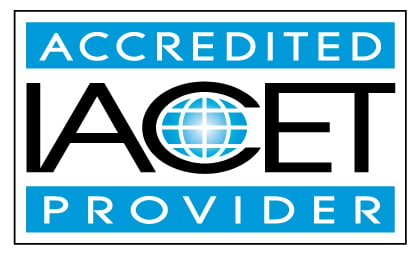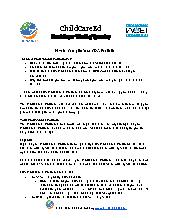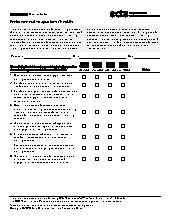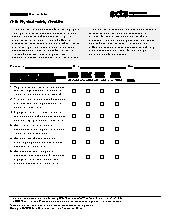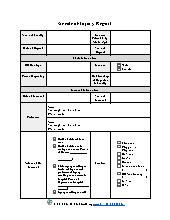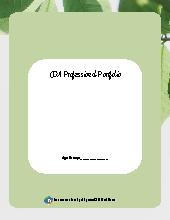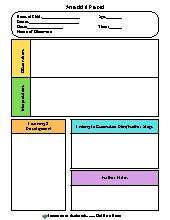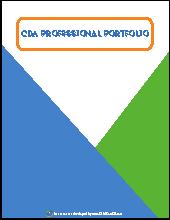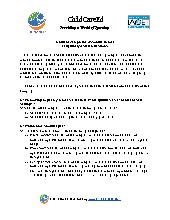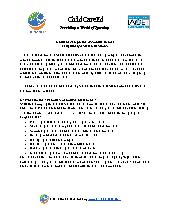CDA Family Child Care Credential with Portfolio Review
Transform your home into a hub of learning and joy with our Family Fun CDA Credential Training! Join us for 120 hours of enriching education designed to open doors to exciting opportunities in early childhood education.
This training is tailored to help participants earn their Family Child Care CDA credential, aimed at educators working with children from birth to 5 years old in a family child care setting.
The Child Development Associate (CDA) Credential™ is the most widely recognized qualification in early childhood education (ECE) and serves as an ideal first step toward career growth in ECE. Through this 120-hour training, participants will fulfill the 10+ hours of required training for the CDA professional credential in the following key areas:
- Creating a safe and healthy learning environment
- Promoting children’s physical and intellectual development
- Supporting children’s social and emotional growth
- Fostering productive relationships with families
- Running an effective program
- Upholding professionalism in early childhood education
- Observing and documenting children’s behavior
- Understanding child development principles
Additionally, this training includes CDA Professional Portfolio Review resources created by certified CDA PD Specialists.
Steps to Earn Your CDA:
What You Need to Apply:
- Complete your 120-hour CDA Family Child Care Credential online with H&H Child Care Training.
- Provide an official document showing you are a high school junior or senior enrolled in an early childhood education program, or have a high school diploma or GED.
- Accumulate 480 clock hours of experience working with children within three years of beginning your application.
Next Step: The CDA Application
Once you have completed the necessary coursework, purchase the $25 CDA Competency Standards Book from the Council for Professional Recognition (http://www.cdacouncil.org). This book will guide you through the application process, including:
- Preparation of a Professional Portfolio – a compilation of key resources.
- Reflective Statements of Competence – using the resources you’ve gathered.
- Professional Philosophy Statement – summarizing your teaching philosophy and insights gained while preparing the portfolio.
- Family Questionnaires – distributed to families of children in your care to highlight areas of strength and growth.
Final Steps:
Once all requirements are met:
- Apply online via Your Council (https://yourcouncil.org/cfprssa/ssaauthmain.login_page) and pay the online assessment fee of $425, or submit a paper application (included in the Family Child Care edition of the CDA Competency Standards book) with the $500 assessment fee.
- Choose a CDA Professional Development (PD) Specialist from the Council’s directory. This specialist will observe your work with young children as part of the application process.
- Schedule Your CDA Exam.
Candidates who have received a "Ready to Schedule" notice from the Council for Professional Recognition can schedule the CDA Exam either online or by phone. Testing is available on a first-come, first-served basis.
To schedule online, create a Pearson VUE account using the Candidate ID number from your "Ready to Schedule" notice.
To schedule by phone, call 1-866-507-5627 between 7:00 a.m. and 7:00 p.m. CST, Monday through Friday. Note that the Council for Professional Recognition cannot schedule exams directly.
By the end of this training, the learner will be able to:
- Define print knowledge as it relates to a preschool classroom.
- Identify the causes and locations of child injuries at childcare settings.
- Demonstrate an understanding of how genetics and environment influence child growth and development.
- Identify resources addressing health, safety and nutrition topics (CPR, 911, CDC, WIC, Poison Control)
- Identify recommended medical and immunization schedules for children birth through age three
- Identify strategies for effective communication with families.
- Give examples of ways to apply and model ethical behavior and professional integrity with all children and youth.
- Give examples of ways to apply and model ethical behavior and professional integrity with community members and organizations.
- Give examples of ways to apply and model ethical behavior and professional integrity with families.
- Define differentiated instruction in early childhood education and describe how it may look in the classroom.
- Identify and contemplate bias and explore anti-bias approaches that support working with children and families.
- Identify strategies to prevent Adverse Childhood Experiences
- Demonstrate an understanding of brain development in young children.
- Demonstrate understanding of brain development in young children.
- Describe the proper procedures of medication administration including: authorizations forms, documentation, storage, training, emergent issues, and resources.
- Demonstrate an understanding of how ongoing preventive health and wellness care affects child development
- Identify strategies to promote cultural diversity and acceptance in the child care environment.
- List examples ways to incorporate inclusion and equity in the classroom
- Demonstrate understanding of considerations before completing an emergency preparedness plan.
- Define what is an emergency and the legal requirements for emergency preparedness for child care professionals.
- Identify tips and strategies for successful mixed-age group instruction.
- Demonstrate understanding of the components of an emergency preparedness plan.
- Identify a variety of marketing platforms to promote childcare programs.
- Demonstrates understanding of the importance of room arrangement/environment.
- Demonstrates understanding of community organizations that support early childhood programs.
- Identify significant events surrounding the evolution of early childhood education in America.
- Identify current events impacting Early Childhood Education.
- Identify appropriate activities for children birth through age three
- Identify the signs of traumatic brain injury in infants and young children.
- Demonstrate the benefits of mixed-age grouping in early childhood education.
- Demonstrate an understanding of how to create a natural outdoor classroom that supports child development in all areas.
- Identify specific considerations and resources for implementing an outdoor classroom program.
- Define Adverse Childhood Experiences and identify its effects on child development
- Define culture and cultural competency
- Demonstrate understanding of the content and implications of environment regulations and supervision requirements
- Demonstrate understanding of the harmful effects of excessive sun exposure in infants and young children.
- Demonstrate understanding of the importance of predictable and consistent care.
- Recognize the legal foundations, including the IDEA Act and Section 504.
- Define developmental domains.
- Recognize the importance of a positive and respectful attitude in working with all children and their families.
- Recognize the importance of knowing the stages of development.
- Define Developmentally Appropriate Practice
- Recognize strategies for effective conferences with families.
- List which professions are mandated reporters.
- Describe common myths and facts about safe sleep for infants and young toddlers.
- Describe infant/toddler nutritional needs.
- List recommended feeding schedules and identify strategies for introducing new food for children birth through age three.
- Describe the benefits of an outdoor classroom.
- List benefits to a multicultural and inclusionary environment.
- Describe the impact of culture on infant and toddler development
- List and review tracking systems to monitor the daily feeding schedule of infants and toddlers
- Describe the steps teachers should take to identifying challenging behaviors.
- Describe the various ways teachers can address challenging behaviors in the classroom.
- Explain appropriate crib guidelines for caregivers to ensure safe sleep for infants and young toddlers.
- Identify ways to reflect on one's own personal perspectives with courage and/or humility
- Identify ways to interact respectfully and appropriately in a variety of cultural contexts
- Identify theorists of guidance and discipline
- Demonstrate an understanding of how environment and equipment modifications support individual needs.
- Identify theory and theorist in relation to child development.
- Identify the differences in major theories.
- Identify factors that influence learning.
- Demonstrate an understanding of how the community in which a child lives influences development
- Demonstrate how theory is reflective in the child care environment for infants and toddlers.
- Identify strategies to increase scientific inquiry in the infant and toddler classroom
- Demonstrate an understanding of creating a successful block center by identifying the various types of blocks, describing an effective block center setup, and recognizing the various stages of block play.
- Define resilience and identify ways it helps young children overcome toxic stressors.
- Recognize informal and formal assessments to plan activities, individualize programs, and improve program quality.
- Give examples of ways to collaborate with other professionals involved in the care and education of all children and youth.
- Give examples of strategies that reduce stress in infants and young children.
- Demonstrate an understanding of cognitive development as it relates to science in infants and toddlers.
- Demonstrate an understanding of typical and atypical development from birth to age 2..
- Identify the stages and milestones of development from birth to age 2.
- Demonstrate an understanding of brain development in children birth through age three.
- Demonstrate appropriate caregiver responses to different infant/toddler temperaments.
- Identify the need to maintain individual feeding schedules for infants.
- Demonstrate an understanding of inclusionary practices.
- Define project based learning and the implications of practice.
- Demonstrate an understanding of how to keep children safe while in vehicles and school buses.
- Identify resources for referral and specialized services.
- Describe the stages of emotional development in young children.
- Give examples of developmentally appropriate musical activities for children.
- Demonstrate an understanding of the impact of culture and diversity in relation to school readiness.
- Understand the relation between how material and equipment selection assist with lesson plan development and implementation.
- Demonstrate an understanding of potential violations of confidentiality and take steps to reduce the risk of occurrence.
- Demonstrate an understanding of typical and atypical development from age 2 to 5.
- Identify procedures that will promote a safe environment (indoor and outdoor).
- Demonstrate Understanding of Meal Planning for young children.
- Demonstrate an understanding of individual planning.
- Demonstrate an understanding of teacher vs. child directed activities.
- Identify curriculums specific to children birth through age three
- Identify the components of: 1. Greeting and Departure 2. Feeding 3. Diapering and Toileting 4. Dressing 5. Sleeping
- Demonstrate an understanding of how to develop appropriate daily schedules that promote routines. (1 hr)
- Demonstrate an understanding of how to implement an Individual Education Plan.
- Identify different types of barriers for mixed ages with disabilities and ways to adapt curriculum to fit their needs.
- Demonstrate understanding of appropriate interaction with infants and toddlers.
- Demonstrate an understanding of how positive guidance promotes sound social and emotional development.
- Identify appropriate practice for the identification, prevention, and treatment of communicable diseases in childcare.
- Demonstrate an understanding of approaches to learning
- Demonstrate understanding of the steps and procedures for reporting accidents
- Define the meaning of professionalism in child care.
- Give examples of ways to apply and model ethical behavior and professional integrity with staff and administrators.
- Describe ways to analyze classrooms for an anti-bias approach.
- Identify strategies to make connections and interact substantively with those who are different from oneself
- Demonstrate how theory is reflective in the child care environment.
- Identify significant events surrounding the evolution of early childhood education throughout the world.
- Identify strategies to listen while withholding judgement about the new or unfamiliar
- Identify the components of the MY Plate.
- Define basic skills children should have when they begin kindergarten
- Demonstrate an understanding of how to implement an Individual Family Support Plan.
- Identify effective strategies for interviewing potential new staff.
- Describe the components of emergency preparedness in the child care setting.
- Demonstrate understanding of developing strategies for involving parents in the child care setting.
- Identify the most common sources of stress for young children.
- Describe the importance of monitoring the family child care environment for potential risks.
- Give examples of strategies caregivers can use to ensure safe sleeping habits and the prevention of SIDS/SUIDS in infants.
- List the most common reasons why infants and toddlers bite.
- Describe strategies to incorporate mathematics into teaching practices.
- Demonstrate understanding of children's general knowledge that supports emerging math skills
- Give examples of strategies to prevent traumatic brain injuries in infants and young children.
- Identify the signs of child abuse and neglect.
- Identify the components of a lesson plan for the family child care setting
- Identify different learning styles and how to differentiate instruction to meet a child's needs.
- Demonstrate an understanding of how chronic illness can affect development.
- Identify strategies in promoting sound health and safety principles for in child care.
- Identify stages and milestones of physical and cognitive development ages 6-13.
- Demonstrate an understanding of how promoting an integrated curriculum promotes development.
- Define the Cycle of Inquiry and how it can be used to plan emergent curriculum.
- Demonstrate an understanding of emergent curriculum.
- Recognize the needs of individualized learning for infants and toddlers.
- Demonstrate understanding of the importance of parent/caregiver relationship
- Identify characteristics of project based learning in the classroom environment and curriculum
- Demonstrate an understanding of the ADA.
- Identify strategies for the child care provider that will promote successful child development.
- Demonstrate an understanding of developmentally appropriate practices for infants and toddlers with developmental, emotional, cognitive, language and/or physical needs.
- Identify different learning styles of young children
- Identify the different learning concepts related to block play.
- Identify adaptations to materials and equipment for children with diagnosed special needs or delay
- Demonstrate an understanding of how to be open to new perspectives and diverse others.
- Demonstrate an understanding of how to engage all children and youth in leadership activities.
- Identify the key elements of an effective staff mentor program.
- Identify necessary information and format for a business plan
- Identify stages and milestones of development for ages 1 to 5
- Identify the role of family in society
- Identify different types of play.
- Explain the importance of math instruction with young children.
- Explain the importance of providing a variety of developmentally appropriate activities, including play, to support the science skills of all children.
- Explain mental health and its Indicators in infants and young children.
- Demonstrate an understanding of ethical conduct: Statement of Commitment & Preamble
- Give examples of tools that record and communicate critical information to other staff and families.
- Define the term multiculturalism and how it relates to the child's environment.
- Demonstrate an understanding of the necessary content of employee and parent contracts
- Identify strategies for working with children with special needs.
- Identify the nutritional needs of children aged four and above.
- Identify ways to help parents and infants/toddlers handle separation and attachment.
- Identify infant and toddler materials and equipment.
- Demonstrate an understanding of how available materials and equipment guide activity development
- Demonstrate an understanding of how appropriate material and equipment promotes play.
- Recognize theory and theorist in relation to child development and approaches to learning.
- Define social emotional development in young children
- Identify strategies for integrating culture and diversity into an infant and toddler program
- Demonstrate an understanding of diverse perspectives, and navigate the ambiguity and complexity that comes with that.
- Identify the components of positive relationships with children, co-workers and families.
- Demonstrate an understanding of the value and importance of complex characteristics of children’s families and communities
- Demonstrate communication skills that enable intercultural communication, including effective listening skills
- List the steps to complete a report on abuse and neglect.
- Define healthy practices to mitigate the spread of germs and decrease the likelihood of SIDS in infants and toddlers.
- Identify the recommended feeding patterns of school-age children.
- Identify the importance of professional development for child care professionals and strategies to make meaningful choices.
- Describe the meaning of positive discipline in the classroom.
- Identify causes of obesity in children.
- Identify common mental health disorders in children and the importance of early intervention.
- Identify the symptoms and signs of poor time management in the child care environment.
- Identify methods of assessments for mixed ages.
- Identify the different types of portfolios used in child care programs, and the appropriate portfolio components for each type.
- Demonstrate understanding of using assessment and observation for short and long term goal development for special needs
- Identify strategies to assist children with food allergies/feeding concerns.
- Recognize the importance of problem solving and conflict resolution strategies with community members and families
- Identify the requirements of an appropriate environment that will promote free exploration and manipulation.
- Define active play in the early childhood classroom and describe its benefits for young children.
- Define the term dual Language Learner
- Identify the stages of second language development in young children and how to partner with families.
- Give examples of strategies for engaging young dual language learners.
- Demonstrate an understanding of observational techniques that result in accurate and objective observation
- Identify parenting styles and the influence those styles have on child development
- Identify communication issues that are common in the early care and education environment
- Demonstrate understanding of effective listening skills in childcare.
- Recognize current tuition trends
- Describe Piaget’s sensorimotor and preoperational stages of cognitive development.
- Explain the challenges behind mixed-age group instruction and strategies to overcome them.
- Demonstrate appropriate/effective responses as they relate to a variety of typical child care scenarios.
- Identify budget line items and basic budget development strategies
- Distinguish how to adapt arts and crafts for younger children and children with different abilities.
- Give examples of activities considered appropriate for mixed-age groups.
- Criteria to earn CEUs:
- Certificates are awarded when the following criteria have been met by the learner:
- Class has been paid in full
- All material has been reviewed
- All review questions and final test have been completed with a passing score of 80% or higher.
- Learning Assessment Method:
- Learners will be assessed through questions after every section is completed. Learners will not be
allowed to proceed to the next section of the training until all questions have been answered correctly.
Learners will be presented with a final test composed of true/false and multiple choice questions.
Upon successful completion of the training, learners will receive their certificate by email.
- Learning Methodology:
- Online material will be presented in the form of slides,
accompanied with speech. Videos will be used to demonstrate ideas and concepts. Charts and tables
will be used for illustration.
- Logistics/Required Technology:
- A stable internet connection is required for the completion of this course. Users are highly encouraged to take their online course on Google Chrome on either a laptop or desktop computer. Speakers and/or headphones are also required to hear speech.
- Payment Policy:
- Payments need to be made in full. No refunds will be issued after starting the class.
- Proprietary or conflict of interest disclosure:
- Unless otherwise stated in the course description none of H & H subject matter experts and editor has any conflict or proprietary interests related to the material they prepared in this course.
- Support Services:
- Please visit our contact us page
You are purchasing a session of an online training that includes online assessments. Your certificate will be emailed to you once you pass the final exam with a passing grade of 80%.
Your certificate will bear the name you provided to us when you signed up. For support and questions regarding the material presented in this class please contact us at info@childcareed.com. Please consult our frequently asked questions page for other questions or feel free to contact us.
ChildCareEd CDA Credential Training Portfolio Review – Required Documents
As part of our Portfolio Review process, you are required to upload the following documents for review by our team of certified CDA PD Specialists..
Please note:
- All documents must be uploaded as PDF files. Other formats will not be accepted.
- Each document you submit is a required component of your Professional Portfolio.
- Once submitted, our certified CDA PD Specialists will review your documents. They will either approve your submission or provide feedback requesting revisions and resubmission.
- After all documents have been reviewed and accepted, and you have successfully completed all coursework, you will receive your certificate for 120 hours of CDA training.
Required Reflective Competency Statements and Documents
- CS I: How you create a safe, healthy, and learning-friendly environment.
- CS II: How you promote physical and cognitive growth.
- CS III: How you help children build positive relationships and self-control.
- CS IV: How you engage and support families.
- CS V: How you keep the classroom organized and support children’s learning.
- CS VI: Your professional growth and advocacy.
- Professional Philosophy Statement
Hours breakdown
45 CD/45 CUR/8 HSN/7 SN/8 PRO/7 COMTopics / Categories
Health, safety and nutritionCurriculum
Professionalism
Special needs
Child development
Community
Group Admin
Family Child Care Providers
Not Applicable
Basic

